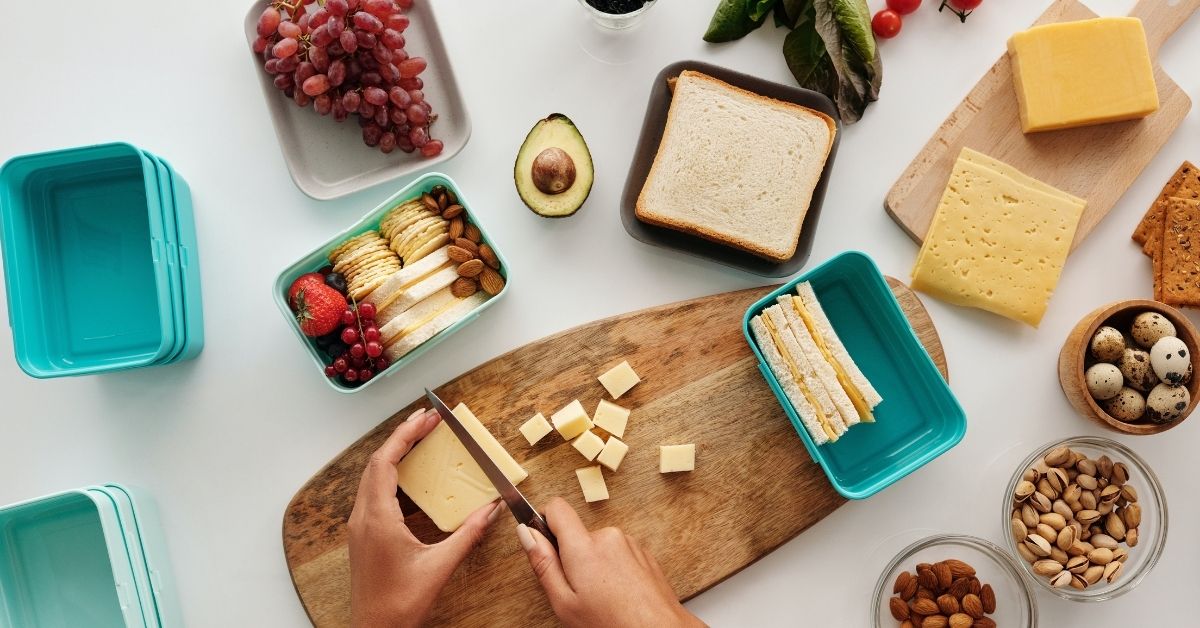We don’t mean to ruin your lunch, but here’s a newsflash that might change your lunch box cleaning habits: You most likely don’t know it, but you may be serving your kids lunch with a generous side of bacteria.
It’s been found that children’s lunch boxes could actually be a breeding ground for dangerous bacteria. Fabric lunch boxes, in particular, hold the most bacteria. A whopping 73 percent of fabric lunch boxes have high counts of dangerous bacteria.
The University of Maryland Eastern Shore’s Food Science and Technology Centre conducted a test on lunch boxes and what they found has got them recommending for parents to clean out their children’s lunch boxes regularly.
Here’s our guide to cleaning lunch boxes and keeping them as bacteria-free as possible.
Using washing machine to wash your lunch bag
Most lunch boxes these days are insulated lunch bags that are best used with lunch ice packs, so we’ll first focus on this type of bag.
First thing you should check for are cleaning instructions for the insulated lunch bags. Make sure to go through the tags and labels thoroughly. Most insulated lunch bags can be machine-washed. You can pop them in the washing machine at least once per week. Use a gentle cycle setting with cold water and mild detergent.
Tip: insulated lunch bags are best left to be air-dried. Wash them early in the weekend, like Friday night or Saturday morning so you can have time to let them naturally and thoroughly dry.
Extra tip: Do not wash the lunch bags along with delicate fabrics or knits. Many of these lunch bags contain heavy zipper or Velcro so they might cause damage to delicate clothing.
Hand-washing method
Some prefer doing this by hand as seeing the lunch bags get manually cleaned gives a sense of assurance that the bacteria truly have been removed. It’s important to be thorough when washing lunch bags with your hands.
First, fill your kitchen sink with warm water. Add a detergent or dishwashing liquid (a teaspoon will do) and mix it in the water well.
Using a sponge, wipe and gently scrub over the lunch bag’s exterior and interior, paying close attention to the inner corners.
If there’s dirt of crumbs in the seams, zippers or closures, use a toothbrush to clean it.
When the lunch bag has been thoroughly washed, rinse well with clean running water. Pat the lunch bags dry using a kitchen or tea towel.
Place your lunch bag on the clothesline (or place them anywhere there’s good air circulation and leave them to dry naturally.
Tip: If your lunch bag has stubborn stains, use baking soda and water. Form a paste using those two ingredients and place them over the stain as long as possible. Wipe away with a damp cloth.
What if the lunch bag has a smell even after you have washed it?
Lunch bags can be clingy – they sometimes have a hard time letting go of the food they held. If you find this to be the case for your lunch bags and they are starting to smell even after you have washed them, try this:
Sprinkle baking soda into the bag, including corners and seams. Leave it overnight. The next day, shake the baking soda off the lunch bag.
Use the dishwasher
It’s not such a popular method, but a reusable lunch bag is listed as one of the “weirdest things you didn’t know” can be put in a dishwasher.
It’s highly suggested you first check with either the washing instructions tag of the lunch box, or if it comes with a manual or booklet. Check with the lunch bag manufacturer first as well if their product can handle being in a dishwashing machine.
Using antibacterial wipes
Pardon the pun, but this is a “quick and dirty” solution. Use antibacterial wipes only for those rare days when your kids’ lunch bags have returned in pristine condition, or if there was a spill in the lunch bag and you need to quickly clean it. Those who do not have the time to wash lunch bags more than twice a week should look into this.
Tip: Be sure that you use antibacterial wips, and not baby wipes. Baby wipes do not really have antibacterial properties and may just spread the virus around more.
What if my lunch bag is the metal kind (or has a hard material)?
This actually makes it easier for you to clean it: hand wash it! Wash as you would normally do utensils — thoroughly and gently.
This also goes for hard plastic container lunches like bento boxes. You can also use the dishwasher for these types of lunch containers.
Here are some more quick tips on how to keep your lunch bags as fresh and clean:
- Clean your lunch bag regularly – aim for at least once a week!
- Use sealed plastic or Tupperware – this is great to avoid spillage within the lunch box.
- Store it in a clean fridge – if you are taking a lunch container of your own and you need to store it in the fridge, make sure that you place yours on a paper towel.
- Empty your lunch bags as soon as you get home.
How have you cleaned your lunch boxes? Do you have any other tips to share with other parents? Feel free to get in touch with us, we’d love to hear from you!



